Writing, editing, publishing and marketing 10, 20, 30 books before you can quit your 9-5 is daunting to many first-time authors.
But the advice out there is to publish as many books as you can, as quickly as you can, and if you don’t, you’ll never become a full-time author (or if you do, it will take decades).
And for many authors, this is how they become a full-time author; by writing a LOT of books – hats off to them!
But to me, this approach to an enriching, rewarding, and enjoyable career as an author feels backward. It feels like jumping onto a hamster wheel you can never disembark from, because if you do, your sales drop, and if you don’t publish a book for 2-3 months, your audience is on you like a pack of wolves, clambering after your next book.
I also feel that if you’re releasing books so often that the quality of your books is likely to suffer too; the writing itself, the editing, the book covers, the proof-reading; the whole package of your book has a higher potential for falling off the quality wagon, because you’re constantly chasing your tail, churning out books like a sausage factory.
Now, don’t get me wrong, I can see the merits of writing lots of books and publishing them quickly.
I can especially see this when publishing exclusively on Amazon, because Amazon loves new releases (with enhanced visibility for 30 days or so) and each new release, especially in a series, can revive older books in that series.
If you’re releasing books multiple times a year, you rapidly build up a big backlist of books that can be selling for years on end.
And the books don’t have to be bestsellers or be particularly well ranked either; have 50 books each selling 3-5 copies per day and you can soon be earning a good royalty check each month.
My wife, Lori, writes fantasy novels, and she is a self-confessed slow writer. Some days, she may spend 3-4 hours writing, re-writing, and editing a single paragraph! To any rapid-release authors out there, this may sound painful!
It took Lori 10 years to write her first book, and in the last 3 years, she has written and published just 3 books.
At the time of writing, there are 4 books published in her series, The Ancestors Saga, plus one companion novel (a side story to Book 2), and an additional side story that sits between Books 1 and 2, scheduled for release in August of this year (2023).
So, why I am telling you all this?
It’s because my wife almost didn’t publish her first book, due to everything we had read about becoming a full-time self-published author involving writing 10, 20, 30+ books before you reach a substantial level of income.
This is a daunting prospect to most budding authors, but especially a slow writer such as Lori.
To cut a long story short (that involves signing a contract with a publisher and then that contract being revoked), after some gentle persuasion on my part, we published that first book of Lori’s and haven’t looked back since.
But, we have followed almost zero best practices to turn Lori into a six-figure author:
- Small mailing list (less than 2,000, highly engaged, email subscribers)
- Publish 1 book per year
- 4 Books published (at the time of writing)
- Not written to market (definitely a challenge to advertise!)
- Very little social media posting
Just because that’s what everyone does, doesn’t mean you need to.
Something I live by is “question everything”.
Just because “everyone” says you need to do this thing, question it.
- Do you really need to publish a book a month, even a book every 2 months?
- Do you really need 20 books published to become a full-time author?
- Do you really need to write to market?
- Do you really need a huge mailing list? (sure, it helps, but quality or quantity, every time)
- Do you really need to post on 10 different social media channels 5 times daily?
Something else I live by is less is more.
Believe it or not, you don’t need to do more; you need to do less, but do it better.
Focus on the 20% of activities that are driving 80% of your results, especially when it comes to marketing.
And to conclude this (long) introduction, in today’s article, I’d like to share with you the 5 marketing strategies my wife and I have used to help her become a six-figure author (with 4 books).
We’ve gone from earning $133 in her first month (April 2020) to now averaging $10,000 – $15,000 per month in royalties, with a 2x-2.5x return on investment each month.
Here’s a screenshot of Lori’s highest monthly earnings to date (November 2022).
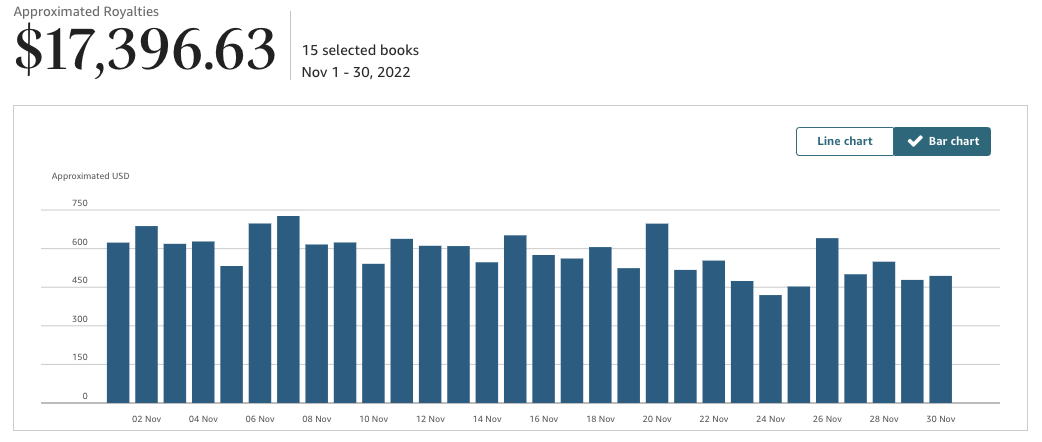
These sorts of numbers were just unfathomable to Lori and me back in April of 2020; it just goes to show that less is more and the power of questioning everything you see, read, and hear.
If Lori and I had followed the advice of publishing 10, 20, 30+ books that we had found online, seemingly everywhere, I wholeheartedly believe that we wouldn’t be where we are today, because the prospect of that was just too daunting for Lori to comprehend.
So, if publishing multiple books per year is as daunting to you as it was to Lori, then please know that there is another way.
And it really boils down to developing, honing, and becoming a master at your craft (i.e. writing high-quality books) and taking the time to do so, as well as not thinking you need to be everywhere and do all the things when it comes to marketing.
None of this is to brag, whatsoever.
It’s to show you what is possible when you do less, not more. To show you what can be achieved when you question the status quo, when you go against the grain, and don’t feel compelled to follow best practice.
Enough pre-amble, let’s dive into the 5 marketing strategies…
Marketing Strategy #1: Advertising
This may come as no surprise! Advertising is, unfortunately (or fortunately, depending on how you look at it) a prerequisite for self-published authors in today’s fiercely competitive publishing world.
No longer can you publish a book on Amazon and sit back as you watch the royalties come in.
That dreamland scenario may have been the case back in circa 2010-2012, but today, it’s just not possible.
In order to sell books every single day, you need to position your books in front of readers every single day.
You need eyeballs on your books and advertising is the quickest and most effective way to achieve that.
As a business owner (which is what you are or what you need to become if you want to be in this game for the foreseeable future), you have two investment options:
- Time
- Money
To me, time is my most valuable asset, because I can always make more money; I can’t make more time.
So, one way to drive traffic to your books is through time-intensive, slow, and often painstaking tactics such as posting on social media 5 times a day, and writing blog posts into the void (i.e. nobody ever sees them).
This approach is going to leave you demoralized after a matter of weeks.
The alternative then is investing a little money into advertising and driving a substantial number of people to your books every single day. Yes, even with just $5-$10 per day, you can send a surprising number of readers to your book product pages on Amazon.
When I started advertising Lori’s books, I was spending less than $10 per day on Facebook Ads. But for that money, I was driving 50-100 people per day to the first book in Lori’s series on Amazon.
A few weeks later, on a daily basis, we were spending $25 – $30 and driving around 300 people to Lori’s book every single day.
We now spend upwards of $200 – $300 per day, with a 2x (or higher) return on investment.
I’m not suggesting that you invest your life savings into advertising but invest something. Start where we did, at $5-$10 per day.
Sure, it may mean sacrificing that steaming cup of coffee each morning from your local coffee shop, or tightening the belt in a few other areas of your life for a few months…
But isn’t that a worthwhile sacrifice if it means you are working towards becoming a full-time author, doing what you love every single day, on your terms?
I’ll let you answer that one.
As I mentioned above, Lori and I started advertising her books with Facebook Ads; it wasn’t until around 9 months later that I really started getting to grips with Amazon Ads, whilst at the same time maintaining (and scaling) the Facebook Ads performance.
And if I can give you one piece of advice about advertising, especially if you are a newbie author or new to advertising, it would be this:
Pick ONE advertising platform and stick with it for 6-12 months before you layer on a second platform.
Learning how to advertise books is a skill in and of itself; it takes time to understand how advertising platforms work, how to interpret the data, what to do with that data, how to make decisions, how to test different ideas, etc.
And ultimately, it takes time to really get your Ads dialed in, no matter which platform you use.
Even when you are a seasoned author, you don’t need more than 2-3 advertising platforms to become a six (or seven) figure author.
Even today, with Lori’s books, the only advertising platforms we use are:
- Facebook Ads
- Amazon Ads
We are gently testing some other marketing channels, just so as not to become overly reliant on these 2 Ad platforms.
But in the beginning stick with ONE platform, learn it, really hone your skills, become a master, and then start the process again with a new platform, whilst continuing to maintain that first platform.
Advertising is an incredibly valuable skill to learn in today’s day and age, and something you should invest the time to learn because it will pay you dividends in the future.
On a final note, before we move on to the second Marketing Strategy, if you’re concerned about how much time advertising is going to take up and take away from the writing of your books, fear not…
I spend, on average, 60-90 minutes per week on each of the 2 advertising platforms for Lori’s books. That’s it. That’s all it needs. And if you’re only spending $10 – $20 per day, you’ll need much less time than this to actually run your Ads.
Yes, when you’re learning a new platform such as Facebook Ads or Amazon Ads, you’re going to need to invest additional time to learn the ins and outs of it, perhaps take some courses, read some books, watch some YouTube videos, etc, but this is a fantastic investment of your time.
Marketing Strategy #2: Optimizing Book Product Pages
Your Book Sells Your Book
No amount of advertising is going to sell a poor-quality book. No matter how great and compelling your Ads are, if your book isn’t putting its best foot forward, the chances of you selling enough copies each day to earn a full-time living from your books are slim to none.
When someone lands on your book product page on Amazon (or another retailer if your books are wide). there are 4 key areas that you, as a self-published author, have direct control over:
- Book Cover
- Book Description
- Pricing
- Subtitle
There is also another area where you have an element of control (which comes down to how well your book is written, edited, proofread, researched, etc.):
- Reviews and Ratings
Whilst you can certainly encourage readers to leave reviews, you can’t force them to leave only 5 star reviews. Only your book itself can do that.
Book Covers
One of the best things we did with Lori’s books was invest a considerable amount of money at the time, into book covers. They cost around $700 each, but they have paid us back multiple times over.
We previously launched a version of Lori’s book back in 2018, but it completely flopped, and that was, in part due to me not knowing what I was doing with advertising, but also, because the book covers were, in a word, awful.
They cost us $100 and did absolutely nothing for us.
Compare those book covers to the covers we have today, and the difference is night and day, as you can see from the images below:
Your book cover has a significant impact on your conversion rate; that is, how many people who land on your book product page actually buy or borrow your book.
A cheap book cover makes a book look cheap and of low quality.
A more premium book cover implies a high-quality book.
As soon as we rebranded the series in April 2020 and relaunched the books (there were 2 written at that time), the sales were exponentially higher than what we were experiencing before.
Book Description (Blurb)
The other critical piece of your book product page is your book description or blurb.
For us, we must have written out 20-30 different blurbs and discarded at least 80% of them!
We then tested a handful, for about a month at a time, found our winner, and stuck with it.
The blurb is what will take potential readers over the line and turn them into a paying reader.
Your blurb should grab the reader’s attention from the first line, and each subsequent line should lead them to the next line.
By the end of the blurb, the reader should be saying to themselves, I just have to buy this book!
A great exercise I encourage you to do to improve your blurb writing skills is:
- Find 5-10 blurbs of bestselling books in your genre
- Handcopy each blurb out (yes, using pen and paper)
- Write 5-10 versions of a blurb for your own book using these bestselling blurbs you hand-copied as a framework
Do one of these a day for a couple of weeks, and you will be amazed at how much your blurb writing skills will improve in such a short space of time.
Pricing
Pricing your books is a BIG topic!
But in short, pick a price that is similar to other books in your genre and also allows you to earn a reasonable profit from each sale, allowing you to spend money on advertising, without going into the red too much in the beginning.
If you want to kickstart your sales, my advice would be to price your book at 99¢ for the first month, then increase the price to $2.99 to $4.99 (these prices are suitable for most genres of fiction.
Many non-fiction books can be priced higher than this; $4.99 – $9.99 is more standard for non-fiction books).
A lower price point will generally encourage more sales and boost your organic ranking on Amazon, whilst a higher price is more likely to drive a lower number of units sold and a poorer organic ranking, but a higher profit margin from each sale.
The beauty of being a self-published author is that you can change the price of your book(s) at any time you wish. So, I would encourage you to test different price points and identify where the sweet spot is for sales volume and profit, for you.
Subtitle
The subtitle is an often overlooked part of a book product page.
The line of text after the title of your book is your subtitle (i.e. after the “:”, as you can see from Lori’s book product page below).
The subtitle allows you the opportunity to re-inforce the genre of your book and whether this book is part of a series.
If you’re running Amazon Ads, having a clear, concise and understandable subtitle can help enormously with your Click-Through-Rates (the percentage of people who see your Ad and click on it).
And even if you’re not running Amazon Ads, when readers land on your book product page, it helps them make a decision on whether or not this is the right book for them.
As you can see from Lori’s subtitle, we are signifying the genre (Fantasy Fiction) and that this particular book is part of a series (The Ancestors Saga).
So, I would encourage you to use your subtitle and really help your potential readers understand what type of book this is and whether or not it belongs in a series.
Reviews and ratings
Whilst you don’t have direct control over what readers say in their reviews (aside from writing an incredible book, but even then, you’re never going to please everyone), what you can control is encouraging as many readers as possible to write a review.
There are a couple of ways to do this; the first is to include a call to action immediately after THE END of each book (on the same page as THE END, so as to not be missed by readers).
The other method we use is to ask your email subscribers to write a review (we’ll be covering email marketing next).
Amazon also asks readers to leave a rating and/or review automatically, once they have finished reading a book on their Kindle.
All of these methods are incredibly effective and have resulted in us now generating anywhere from 5-20 reviews/ratings per day across Lori’s 4 books.
The number of reviews/ratings your books have plays a vital role in how every aspect of your marketing performs.
Nobody wants to be the first to try out a brand-new book from an unknown author.
Social proof acts as a trust signal to new readers that “other people have enjoyed this book, so there’s a good chance I’ll enjoy it too.”
I recommend you collect at least 20+ reviews/ratings on your book(s) before you start advertising; if you don’t, whilst not guaranteed, there’s a good chance that your advertising isn’t going to perform too well.
Marketing Strategy #3: Email Marketing
Your books are your biggest asset. But your audience is your second biggest asset.
Why?
Because, within reason, you can contact your audience at any time about new releases, discounts, backlist books, and more, but only if you build it the right way.
And the right way isn’t building a Twitter, Instagram or Facebook following, although that can help.
The right way is by building an email list.
Building an audience on Twitter, Instagram or Facebook, or any other social media platform, to me, is like building an audience on rented ground.
The algorithm of those platforms can change at any time. Accounts can be closed down at any time. You just lack control and stability.
Not to mention that anything you post on social media is only seen by a fraction of your audience unless you decide to pay to reach more of your audience.
With an email list, however, you can reach up to 100% of your audience (a more realistic figure though is 50% – 90% of your audience, depending on how engaged they are). Even at that rate, you are reaching a far larger proportion of your audience than that of your social media following.
I’m not saying that building an audience on social media is bad or a waste of time.
But, I would encourage you to de-platform your social media audience regularly, by inviting them to join your email list.
Lori’s email list, at the time of writing, is small compared to many authors (less than 2,000 subscribers), but the engagement of these subscribers is particularly high.
I would take a small audience size and a high engagement rate over a huge audience and a low engagement rate, any day of the week.
The question then becomes, how do you build an email list of highly engaged subscribers?
A Reader Magnet is simply something you offer to readers for free in exchange for their email address. Here’s a few Reader Magnet examples to get you thinking:
- Prequel to your story
- Sequel to your story
- Prologue to your story
- Epilogue to your story
- Bonus Chapters
- Deleted Chapters
- An audiobook version of your book
- A resource of some sort (e.g. Spreadsheet, Notion template, etc.)
- You could even offer an entire book (or books) for free
The list is endless! Just make sure that it’s valuable and is of as high a quality as your paid books; don’t skimp on your Reader Magnet just because it’s free; that will only hurt you in the long run.
With Lori’s series, we offer a free book that tells the story of the beginnings of the 2 main characters’ relationship. And it’s only available at the end of Book 1, the reason being that readers need to read Book 1 for the Reader Magnet book to make sense.
We invite readers to download the free book directly after THE END of Book 1, as you can see from the screenshot below.
If it makes sense, you can also offer your Reader Magnet in the front matter of your book.
When readers click on the link to the Reader Magnet in Lori’s book (or type it in manually to their internet browser), they are directed to a landing page with a little more information about the book and a place to enter their email address.
Once they’ve entered their email address and submitted it, they are taken to a page where they can download their free book.
And from there, they are on Lori’s email list and receive a series of pre-written, automated emails (known as an Autoresponder) over the course of 2 weeks, where we nurture the relationship between Lori and the reader, whilst also letting them know about Lori’s other books.
So, if you haven’t started to build your email list yet, I highly recommend you start doing so.
And it doesn’t have to cost you anything aside from some time.
We, like many self-published authors, use a platform called Mailerlite, which has a free plan that only converts to a paid plan when you have 1,000 subscribers, so I encourage you to check Mailerlite out.
Marketing Strategy #4: Launch Team
Collecting reviews on your books from a standing start is daunting; it’s also slow.
However, there is a way to speed up the process.
With a Launch Team.
A Launch Team (sometimes known as an Advanced Reader Copy (ARC) Team), is a select, small group of readers who absolutely love your work, and support you during the launch of your new releases by leaving reviews of your books on launch day, or during launch week.
To be part of the Launch Team, the deal is that, in exchange for receiving a free copy of Lori’s new releases before everyone else (that they can read before officially launched), members of the Launch Team must leave a review on Amazon on launch day, or at least during launch week.
This helps to build up social proof of a book quickly, especially important for new releases on Amazon when we are driving a lot of traffic to it through advertising.
The way a Launch Team works is relatively simple; here’s how we built the Launch Team for Lori’s books:
Step #1: Added an email into the Email Autoresponder (the series of emails someone receives automatically when they download the free Reader Magnet discussed in Marketing Strategy #3), that invites them to join the Launch Team.
Step #2: Created a landing page on Lori’s website explaining what the Launch Team is all about, the benefits of joining it, and the expectations of being a part of it.
Step #3: On the Launch Team landing page, we added a form where people submit their first name and email address to request to join the Launch Team.
Step #4: When a new release is approaching launch day, we send a free copy of this new book to everyone on the Launch Team (2-4 weeks prior to launch).
Step #5: On launch day, we email the Launch Team asking them to leave a review of the new release on Amazon.
This strategy has led to us generating up to 50 reviews of a brand-new book within 1-2 days of releasing it.
Now, this isn’t a huge number of reviews compared to some authors, but for many, this is a great start and really helps with sales during launch week. By the end of launch week, we typically have around 100-150 reviews/ratings on a new book, and it just goes up and up from there.
Marketing Strategy #5: Quarterly Promotions of Book 1
The final strategy that has helped Lori’ become a six-figure author is quarterly promotions of Book 1 of her series.
Lori’s books are exclusive to Amazon (enrolled in a program called KDP Select). KDP Select is a topic in and of itself, but In short, this means that we aren’t allowed to publish the e-book versions of Lori’s books anywhere else online.
The minimum enrollment period for KDP Select is 90 days. So, if you don’t like being exclusive to Amazon, you can remove your books from KDP Select after 90 days.
We can publish the print versions of the same books anywhere; it’s just the ebook versions that the KDP Select agreement deals with.
One of the many perks that KDP Select brings to authors is being able to run Kindle Countdown Deals. These allow you to run a limited-time promotion on your book(s), for up to 7 days, every 90 days (i.e. one Kindle Countdown Deal for each KDP Select enrollment period).
You can also run a Free Book Deal, offering your book for free for up to 5 days every 90 days (i.e. one Free Book Deal for each KDP Select enrollment period).
With Kindle Countdown Deals, your book must remain paid, but can be reduced to as little as $0.99, for up to 7 days.
And even at $0.99, you still earn 70% royalties. If you were to manually price your book at $0.99, you would only receive 35% royalties, so the 70% makes a big difference to your bottom line.
Currently, Kindle Countdown Deals can only be run in the USA and the UK.
Now you know a little more about Kindle Countdown Deals, here’s how we use them for Lori’s books.
Every quarter, we run a Kindle Countdown Deal on Book 1 of Lori’s series; this is because her books are best enjoyed when read in order.
We reduce the price of Book 1 from the usual retail price of $2.99 down to $0.99 for the full 7 days.
Another perk of Kindle Countdown Deals is that, when active, Amazon places a countdown timer on your book product page, as shown in the screenshot below, counting down the time left of this deal, which adds a level of scarcity and encourages readers to take action there and then.
We then drive a ton of traffic to Book 1 with Facebook Ads predominantly; we are always running Facebook Ads (I haven’t had a day go by in over 3 years where Facebook Ads haven’t been running), but I just ramp up the budgets on proven Ads.
We also schedule several Promo Sites, such as Bargain Booksy, to promote the books to their audience on the final 3 days of the $0.99 deal.
The reason for scheduling the Promo Sites on the final 3 days of the promo is to give Book 1 a final bug push before it reverts back to full price.
This way, we enjoy enhanced visibility on Amazon and therefore a lot of full price sales and additional borrows of the book.
Running these promotions once a quarter helps us bring a flurry of new readers into the series. And because they have paid for Book 1 (albeit a third of the full price of the book), they have some skin in the game, and many readers will go onto buy Book 2, Book 3 and Book 4.
Sure, you lose a little revenue for a few days with a lower price point, but the long-term gains of running a promotion are huge:
- New readers
- A boost in your bestseller rank(s)
- Additional sales and borrows of all books in your series/catalog
- More readers joining your email list
- Increase in reviews and ratings of your books
So, if you’ve been on the fence about running a promotion on your book(s), I would highly encourage you to do so… but not too often.
Once a quarter is about the right cadence for us. You don’t want to cheapen your author brand by constantly running promotions, but 4 times a year is perfectly acceptable in my eyes, and the benefits to doing so are totally worth taking a slight hit on revenue for a few days.
Before We Wrap Up…
As we begin to conclude this article, I’d like to give you one final takeaway that completely changed the game for me when it came to marketing Lori’s books…
The 4 Pillars of Author Marketing:
- Book Product Page
- Traffic
- Audience Building
- Profit
These are where your focus should be when marketing your books; not all at once, but when you’re not writing, and you’re working on the marketing side of things, if you really want to move the needle in your author business, allocate time each week to work on one or more these pillars
The two pillars you’ll likely be working on most are Traffic and Audience Building. The others aren’t something you can work on each week directly.
The Book Product Page needs time to gather enough data to make statistically significant decisions on, and profit requires you to have some data, have made some sales, spent some money on ads, etc.
Understanding these 4 pillars, for me, has made the whole minefield of marketing so much easier and simpler. I can plan out in advance what needs to be done on a monthly, weekly, and daily basis, so much so, that when I sit down at my desk, I know exactly what needs to be done.
The alternative to this is sitting down at the desk, not knowing what to work on, and wasting 30 – 60 minutes checking and replying to emails, refreshing the KDP Reports dashboard, looking at the stats of the Ads, etc, ultimately achieving nothing meaningful. Also known as “busy work”.
With an understanding of the 4 pillars, you’ll be able to achieve so much more in surprisingly little time.
Action Steps
And, finally, I’d like to leave you with some actionable advice you can start implementing immediately and see results from sooner rather than later, that tie in with The 4 Pillars of Author Marketing we’ve just touched on.
Action Step #1: Drive Traffic To Your Books
If you’re not driving traffic to your books with advertising yet, start yesterday!
In all seriousness, advertising is the quickest way to start generating sales.
And start with 1 platform. Not 2, not 5, not 10. One.
You’ll only burn yourself out and spread your time, energy, and budget far too thin if you try and do more than that in the beginning.
For fiction authors, my advice would be to start with Facebook Ads. For non-fiction authors, I recommend starting with Amazon Ads.
Action Step #2: Start Building An Audience of Loyal Readers
This is best achieved by offering something for free (i.e. A Reader Magnet, such as a prologue, epilogue, bonus chapter(s), resources/downloads, even a whole book.
As we covered earlier in this article, these freebies are often referred to as Reader Magnets, and you offer them to readers for free in exchange for their email address.
The best place to “pitch” your reader magnet is in the front and back matter of your books.
So, if you don’t have a reader magnet, start brainstorming some ideas, create it, build a landing page, link it to your mailing list (Mailerlite is a great free piece of software to do all of this), and add a link for readers to sign up for your free Reader Magnet in the front and back matter of your book(s).
Action Step #3: Audit your book product page(s)
To do this, ask yourself the following questions:
- Is my book cover professional? Does it look similar to other books in my genre, but different enough so as not to blend in? Does it convey quality?
- Do I hook readers in with the first line of my book description? Does one line lead to another? Is it compelling, engaging, and leaving me wanting to know more and to close the curiosity loop I’ve (hopefully) created in the book description?
- Do I have at least 20+ reviews? (ideally you need this number to start advertising) What are the reviews like? What is the overall star rating for the book? (generally, an overall star rating of 4.2 and above will perform best)
- Is my book formatted well? Does it look professional? Have I run my manuscript through a tool such as Grammarly or Pro Writing Aid for spelling and grammar checks?
- Does my subtitle clearly identify the type/genre of book this is?
- Is the price point of my book similar to other books in my genre/sub-genre?
Action Step #4: Track Your Numbers
At the very least, I recommend you track the following on a monthly basis:
- Email Subscribers
- Royalties
- Ad Spend (broken down by Ad Platform if desired)
- Profit
Seeing these numbers in black and white will give you a whole new perspective on the health of your author business and enable you to make much more informed decisions.
Wrapping Up
And there you have it!
Marketing books isn’t easy, per se, but it is simple, provided you don’t overcomplicate things (something we naturally want to do as humans).
Take your time, don’t feel the need to be everywhere, and do all the things.
Identify what works well for you and do that. Avoid becoming a victim of shiny object syndrome and the latest fads being discussed in Facebook Groups. Just do you.
Thank you so much for reading this article, I hope you’ve found it helpful and has given you a new perspective on marketing your books, along with some clear actionable takeaways you can start implementing immediately into your author business.
I wish you all the best with your endeavors as a self-published author.
Author Bio
Matt Holmes helps self-published authors bring their work into the world through intentional and strategic marketing.
He writes a free book marketing newsletter received by more than 2,800 authors, called The Saturday Self-Published Author. You can learn more and sign up for FREE here.
On top of this, he offers a number of online courses around the topics of marketing and advertising for authors, which you can check out here, as well as a FREE email course, 7 Days To Author Ads Success.
On a personal note, Matt lives in the UK with his wife, Lori, an author of fantasy novels, (which is how Matt got started in the world of self-publishing in the first place!) their 3 children, Jacob, Caleb and Jonathan and their 2 dogs, Freya and Loki – it’s a busy house!
If you want to find out more about Matt and his work, it’s all available at www.matthewjholmes.com. And you can follow him on Twitter here.

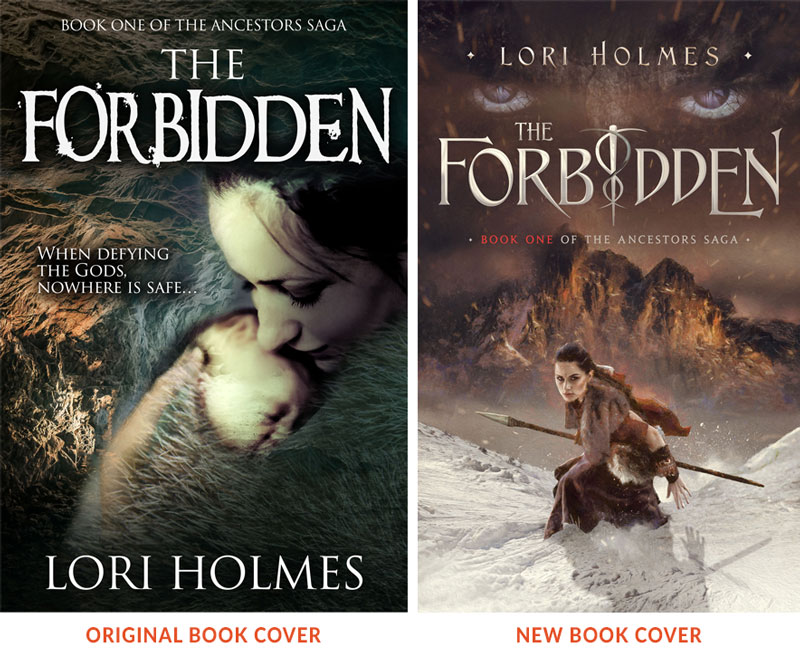
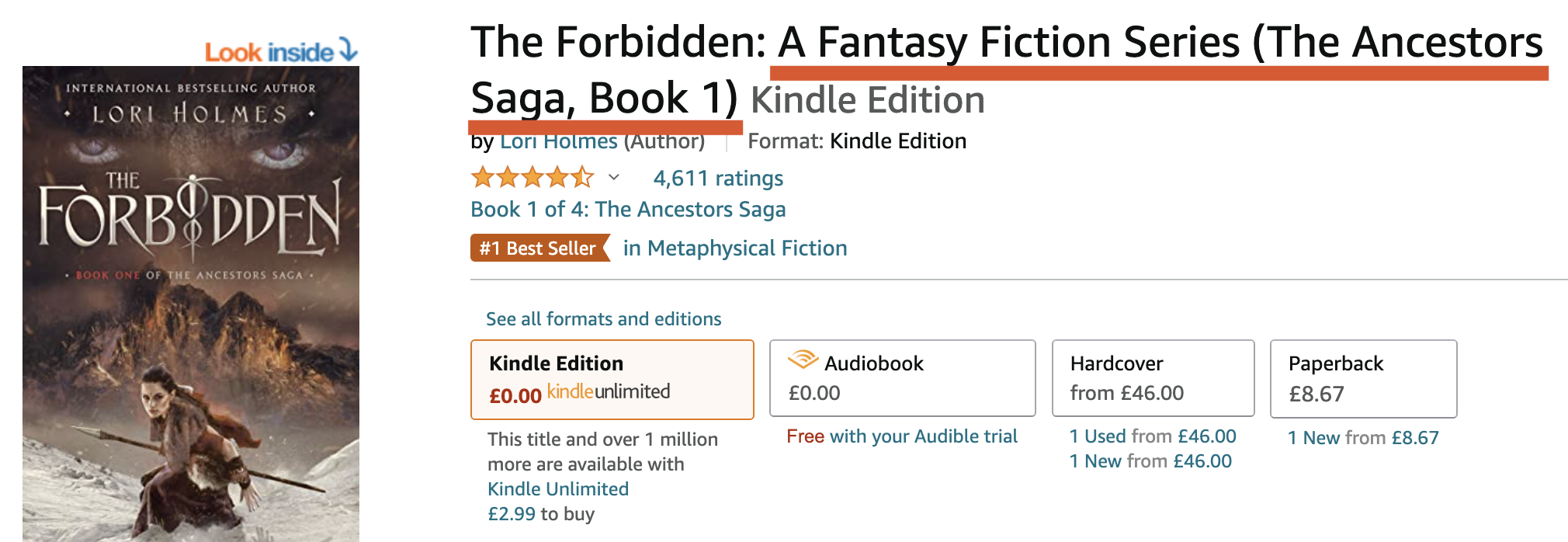
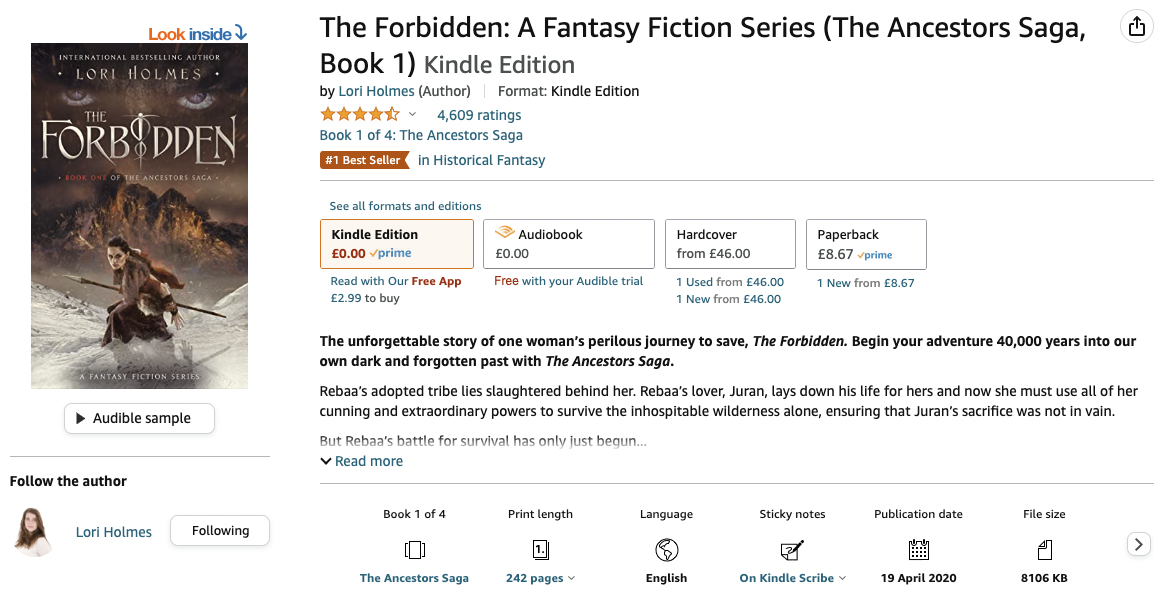
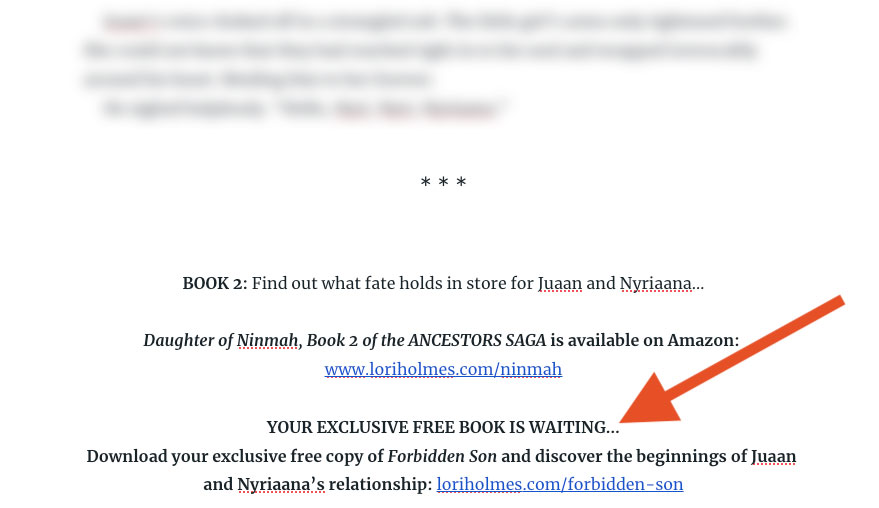
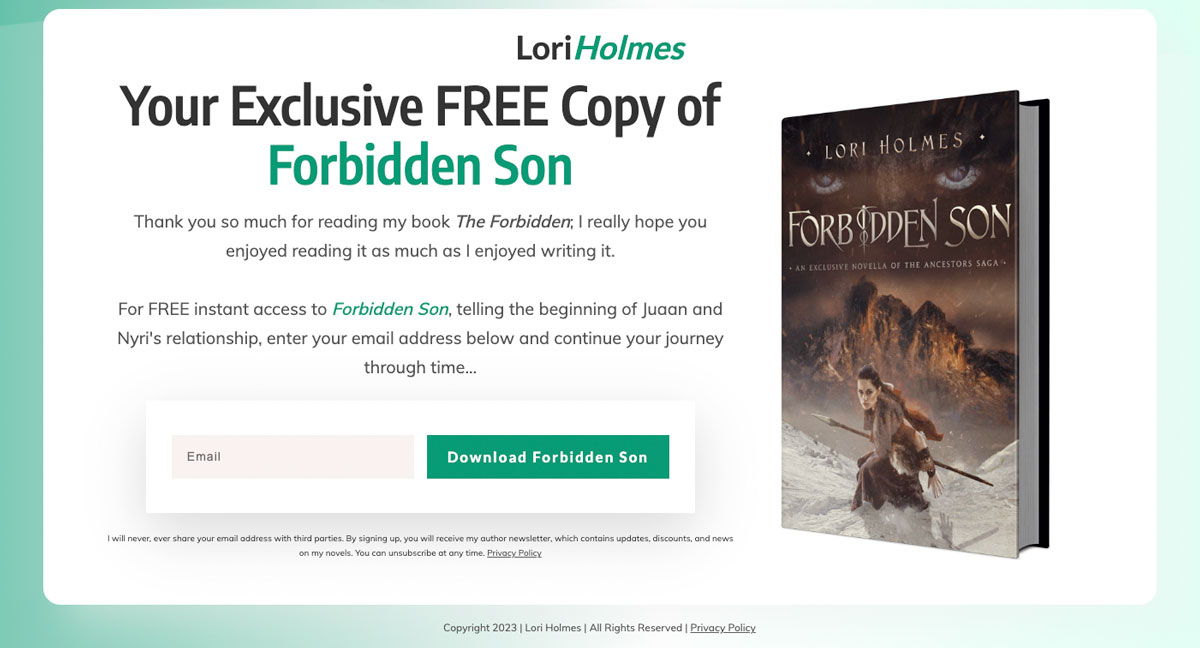
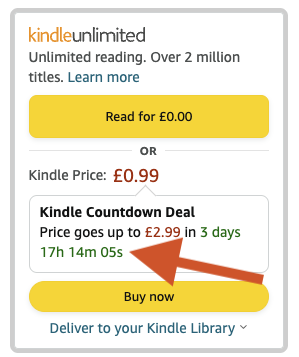

Thisis a really excellent article. I already knew most of these but you have laid themout very logically with great examples and explanations – I will be referring writers here. Also it is very motivating – I’ve fallen off the wafgon on some of these opractices lately, but am now encouraged to resiume. |The only one I have never done is Facebook ads. They are very complicated to get right and can waste a lot of money if not done well. Thanks for this article.
Thank you so much for your kind words, they truly mean a lot and I’m thrilled that you found the article so helpful. Yes, Facebook Ads can be tricky in the beginning, but like anything, once you wrap your head around them, they become more straightforward (and less wasteful on budget). Facebook Ads can also drive a LOT of traffic and sales of your books, so they are worth investing in. Thank you again 🙂
Easily one of the best articles I’ve read regarding book marketing. I’m kind of taking on a hybrid approach, writing a backlist of 12 novels in my first three years of self-publishing, all set in a shared universe – think the MCU, but with more of a science fantasy spin. These take place across five different series.
Book 13 is the one I’m taking my time with, and it serves as the first book in the sixth and final series, but as Book I in the overall timeline. It’s the one that I’m looking to use to sell (and market) the rest of my backlist, almost one of those, “Oh, by the way, if you liked this book, I have 12 more set in the same universe,” type of approach.
I definitely learned a lot in this piece, Matt, and it’s probably something I’ll be reverting back to time and again, especially when it comes to building a solid launch team – something I’ve been slacking with.
I also agree 1,000% regarding mailing lists. My list of readers is more than engaging, despite having roughly 1,700 subs at the moment. I often vet my list by unsubscribing those who’ve gone six months without opening one of my weekly email campaigns, and I’ve noticed the engagement skyrocketing.
Thank you so much ; that is praise indeed 🙂 Fantastic plan you have there with the shared-universe and multiple series.
Providing you link them all together and make it as easy as possible for readers to find each of the series, you’ll see good readthrough as it’s all connected.
And focusing on Book 1 is the right way to go, to draw people into the series. You could potentially advertise the Book 1’s across the 5 series’, if it makes sense to do so, or perhaps just 2 or 3 of the best performers, to reach more people and draw people in through multiple entry points.
Absolutely, engagement on emails is far more important than vanity metrics of the number of subscribers.
It can be scary unsubscribing people who haven’t opened one of your emails for 6 months, but the health of your list will be much better because of it – and also improve deliverability.
Thank you again for your kind words.
Really enjoyed reading this article. As a newbie author who loves to write, it was a shock to the system when I realised I had to also market my book. I am not good at this. There are so many conflicting views on how to market and it is confusing, so thank you for sharing your marketing strategies. I have just signed up to your newsletter for more ideas.
Thank you, Paul, so pleased to hear you enjoyed the article. Yes, marketing is something that doesn’t come naturally to all authors (my wife included!).
And there are so many different avenues you could go down to market your books. But the important thing is that you don’t do all the things; you identify what works for you and do that, and only that. Avoid shiny object syndrome at all costs!
Thank you for signing up for my newsletter too, Paul, much appreciated 🙂
To “identify what works for you,” how did you test a handful of blurbs? Thanks for a great article!
As another slow writer (my first time-travel thriller came out at the end of 2020, book two summer 2022, and I’m currently working on the final instalment in the series), I want to thank you for reinforcing what I’ve long believed: pumping out twelve books a year is not the only way to achieve success in this business. Your article has also inspired me to take a step back from the social media hamster wheel, finish book three, and try, once and for all, to learn Facebook ads. Cheers to Lori for finding success with books that aren’t written to market. Trust me, I know how hard that is!
Thank you 🙂 Yes, rapid release is just one way of publishing, but it’s definitely not the only way. It’s unrealistic for many authors.
Fantastic that the article has given you a source of inspiration. Social media can be draining and suck a lot of your creative energy away from writing.
So setting a focus and committing to it (in your case Facebook Ads) is definitely the way to go. Find 1-2 (possibly 3) traffic sources and focus on those; that’s all you need.
Thank you, yes, not written to market is definitely a challenge when it comes to marketing!
All the best for the final installment of your series and thank you again for reading the article.
The only article ever needed on marketing! Simple, easy, and 100% accurate.
This article is so helpful! Thank you for the ideas, as well as the encouragement for us slow writers.
Matt,
Excellent article. It is great encouragement for crock pot authors (slow cookers 🙂
I have gone through your Facebook ads course and found it very helpful. In addition to being an author myself, I am also an independent publishing consultant. I refer clients to your Facebook and Amazon courses on a regular basis.
Matt,
Thank you for the article. It’s very informative. I have a question, though. Do you have any advertising suggestions for steamy romance authors who cannot advertise on Facebook or Amazon? My ad was blocked by Facebook because of violating their adult content rules. Amazon’s rules state the ads must be suitable for a general audience.
This is fantastic info — thanks so much!
By the way, are you Matthew J Holmes? If so, your FB ad/marketing emails, are equally brilliant!
Great information, Matt. This is one article I’m printing out to keep handy. Thank you.
Thank you for sharing some of your experience and what has worked for you & your wife. You posted a screen shot of your best month of royalties. As you said later, profit is important to track; can you share how much you spent during the same period on advertising? You mentioned $200-$300 per day in ad spend, but it wasn’t clear if that was total or just one ad platform. Thx!
I don’t disagree with any of the marketing suggestions, but I did want to comment on this:
“We now spend upwards of $200 – $300 per day, with a 2x (or higher) return on investment.”
That’s another way of saying half your revenue is going toward ad spend. It’s not six figures after that, right? And you’re having to put time into tinkering with the ads every week in addition to the time Lori spends writing the books.
Taking home 50K/yr or whatever with four books is still great, but I found the title a bit disingenuous. I think you’ll also find that a lot of the rapid releasers can spend a much smaller % of their revenue on advertising to make their six or seven figures. The successful ones tend to be doing everything mentioned in this article and more.
Anyway, I only commented because the tone was a little holier-than-thou, not because the advice is bad. Maybe just my take though. Carry on!
Thanks so much for the information and advice. I haven’t released a book in years and have probably lost all my readers and definitely my sales. I plan to use your strategies when I release my next book later this year. I’ll let you know how it goes. 🙂
This article is truly excellent. While I was already familiar with most of these points, you have presented them in a clear and organized manner with great examples and explanations. I will definitely be recommending this to other writers. Moreover, it’s highly motivating. I admit that I haven’t been consistent with some of these practices lately, but now I feel encouraged to get back on track. The only aspect I have never tried is Facebook ads. They seem quite complex to master, and if not done well, they can be a waste of money. Thank you for providing this informative article.
It’s great to see the strategies and insights you’ve shared from your wife’s journey to becoming a successful author. It’s evident that you’ve found a unique path that aligns with her writing style and strengths. Here’s a brief comment appreciating the article:
“Thank you for sharing your wife’s inspiring journey as an author. The strategies you’ve outlined showcase the power of quality over quantity, as well as the importance of challenging conventional wisdom. Your focus on mastering the craft and targeted advertising is both insightful and encouraging. It’s a reminder that success in the writing world can be achieved through careful consideration and dedication. Kudos to you both for forging your own path and achieving such impressive results!